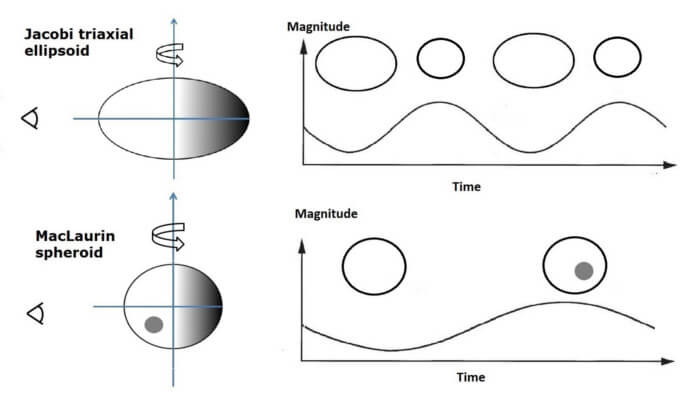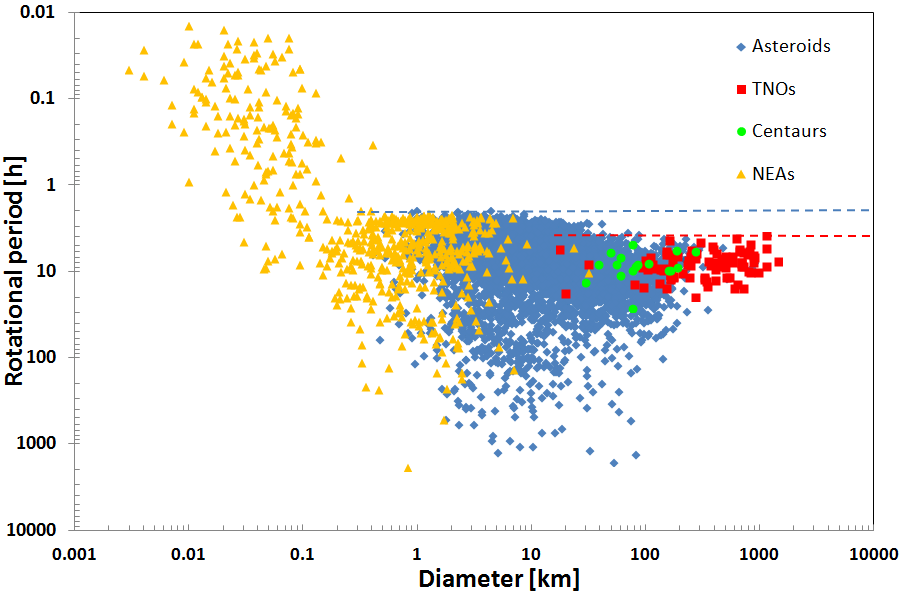Photometry
An object in rotation will in general produce brightness variations that can be measured giving rise to what we call lightcurves. Measuring the time separation of repeated brightness peaks in a lightcurve provides information on rotational properties of the object.
What Causes A Lightcurve?
Lightcurves are produced by various mechanisms:
- albedo variations on the body surface
- non-spherical shape, and/or
- contact or eclipsing binary



Elongated or spheroidal objects?
Important to the interpretation of light curve data is distinguishing between single- and double-peaked lightcurves. Assuming a triaxial object (Jacobi), we expect a lightcurve with two maxima and two minima, corresponding to a full rotation (Figure below). In such a case, we expect a double-peaked lightcurve. However, if the object is spherical or an oblate spheroid (MacLaurin), we expect a lightcurve with one minimum and one maximum per rotation cycle (single-peaked lightcurve) only if there is/are spot(s) on the surface.

Summary of rotational properties
In the figure below, all minor bodies with a rotational period reported in the literature are plotted. It has been shown that asteroids with sizes from a few hundred meters up to about 10km show a spin barrier at 2.2h (blue dashed line). At larger sizes (for diameter, D>50 km), the spin barrier seems to shift to longer rotation periods. The spin barrier seems to disappear at diameters less than 0.2km, suggesting a change in the physical properties of bodies at these small sizes. MANOS is designed to probe this size regime to better understand how the properties of these small objects compare to their larger counterparts.



